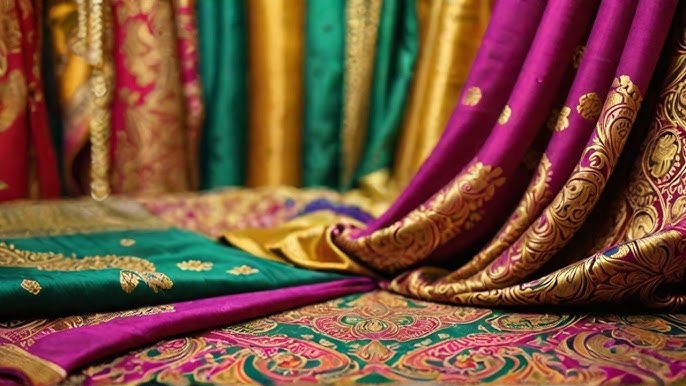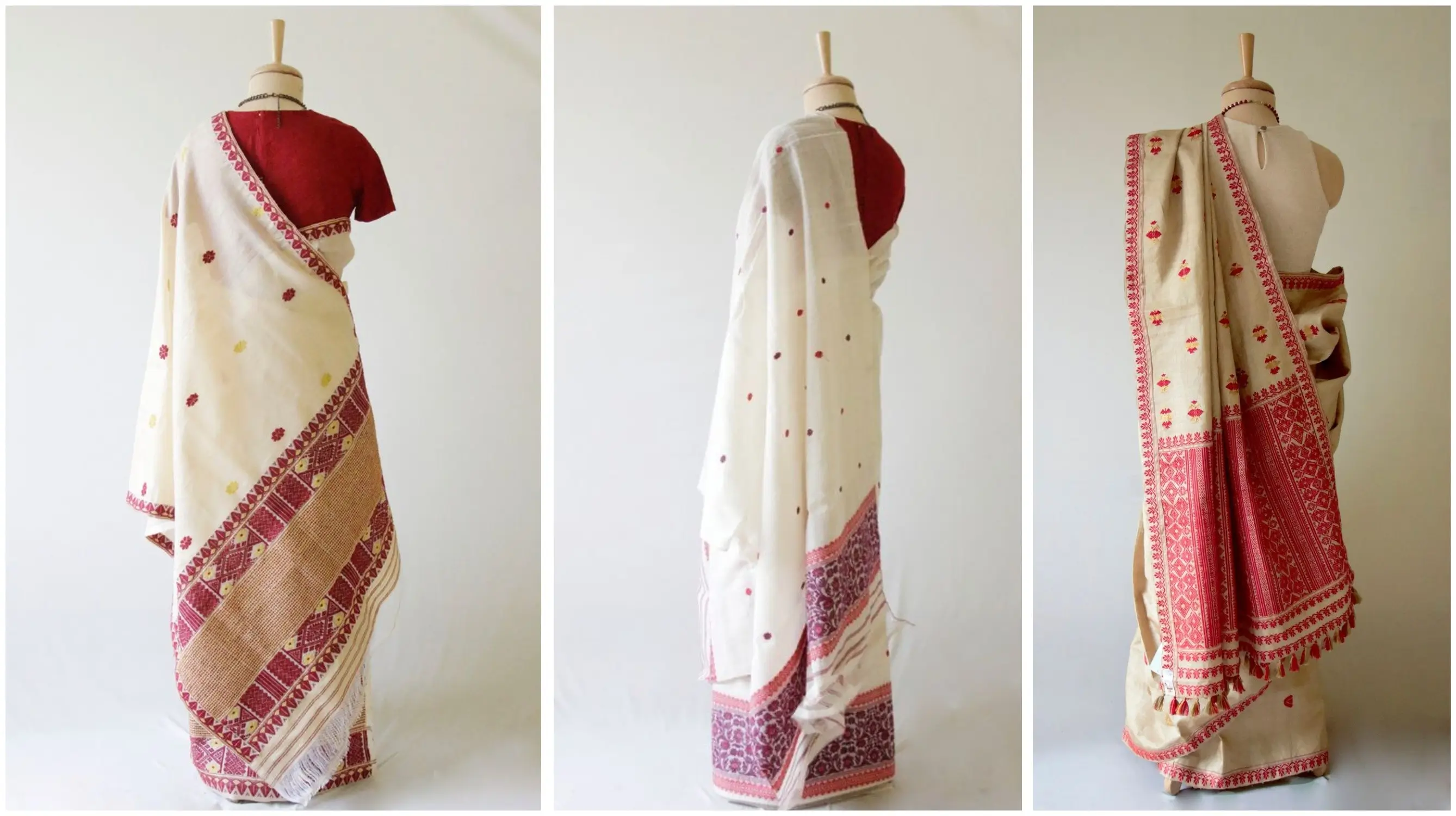The art of manufacturing Banarasi handloom sona rupa saree
Sona rupa (gold and silver zari) is the real embellishment a pure handloom Banarasi saree has. Do you know how meticulously these sarees are woven by hand from fine threads into six-yard sarees where each saree is a masterpiece? Today, you’ll learn very important aspects of these special handloom sarees from their history to the whole process of making.
[Which is the Best Banarasi saree? Let's find out]
Banarasi handloom industry
Banarasi handloom saree industry not only stands as a hub of large-scale handloom Banarasi saree production in the country but also serves as a lifeline for many communities.
Here, skilled artisans meticulously craft each saree, preserving age-old techniques passed down through generations. Artisans, often from familial lineages of weavers, contribute to the industry's rich legacy.
With hands that have perfected the art of weaving, they create sarees adorned with intricate motifs, blending Persian and Indian aesthetics together.
The Banarasi handloom saree, more than a garment, is a symbol of craftsmanship, sustaining both tradition and the livelihoods of those who weave these timeless pieces.
In exploring the Banarasi handloom saree industry, we uncover not just threads and fabric but a thriving ecosystem where tradition meets the contemporary, fostering a sense of identity and pride.
[How to Accessorize Sky Blue Banarasi Sarees: A Complete Guide]
What is Sona Rupa (gold-silver zari)?
Sona Rupa, denoting Gold and Silver Zari in weaving, reflects a blend of tradition and brilliance. 'Rupa,' the term for silver in various Indian languages, is the root of 'Rupaiya' for currency.
In crafting Sona Rupa Saree, both gold and silver threads are intricately woven together and beaten into thin wires to make zari. There were various types of zari. Originally, silver Zari was tinted with turmeric water, known as 'Haldi Zari,' but it was not a long-lasting solution, as the colour would fade over time.
The middle of the last century witnessed a significant shift with the advent of electroplating techniques. These innovations found their way into the traditional silk clusters of Varanasi, bringing stability and longevity to the golden Zari. As gold prices surged, the usage of pure gold Zari witnessed a decline.
Today, the lacquering technique is used which is also called imitation zari, using chemicals to create the illusion of gold. Though it may not be the real deal, it mimics the lustre of gold effectively.
Moreover, chemicals can produce a spectrum of shades, from radiant brilliance to a subtle matte finish.
Now you must have understood the evolution of zari through time and what significance and value pure Banarasi handloom Sona Rupa saree holds in today’s time.
[Masterpieces in Banarasi: Adorning Beauty with Rangkat Katan Sarees]
Art of manufacturing Banarasi handloom Sona Rupa Saree
If we are talking about the art of the Banarasi handloom sona rupa saree, let's get into the real art- that’s its manufacturing process. It all begins with skilled artisans in Banaras, who carefully choose the finest materials.
They pick special silk threads and clean them thoroughly.
Once the threads are ready, the magic starts on the handloom. The weavers set the stage by arranging the threads lengthwise (warp) and crosswise (weft), creating the base for the saree. Now, here comes the role of Sona Rupa or Gold-Silver Zari.
Crafting a Banarasi handloom sona rupa saree is a meticulous journey. Beginning with copper, chosen for its pliability, the metal undergoes cleaning before being drawn into thin wires.
These wires are then coated with real gold or silver through processes like electroplating or gilding, ensuring a lasting glow. The adorned metal threads delicately wind around a silk core, adding softness while maintaining opulence.
After drawing and flattening for a refined texture, the zari thread transforms into mesmerizing patterns on the saree using techniques like Kadwa, Jangla, and Tanchoi.
The final act unfolds on a handloom, where skilled weavers blend the zari thread seamlessly with pure silk fabric.
The saree gets its final touches – washing, polishing, and sometimes additional embellishments. This whole process, from choosing threads to the final touches, takes a lot of love and about weeks of skilled work.
The result is a breathtaking Banarasi handloom sona rupa saree, a fusion of tradition and craftsmanship, ready to enchant with its timeless elegance.
[What to Shop from Varanasi - Local Shopping Attractions]
Final Thoughts
Making a banarasi handloom sona rupa saree is a skilled art filled with passion and detailed efforts. This crafting skill has been transcended through generations in their families in Banaras and some even continue to make them on handloom through hard work.
When you read about such things and get to understand the real deal in the making of a beautiful piece that you’re just buying for an occasion. That’s the magic of handmade sarees too that they last the test of time and can be years later with the same shine.
So, next time you think of getting a Banrasi saree, think of investing in a Banarasi handloom sona rupa saree from our brand Albeli, we have exquisite collections of handloom Banarasi sarees in our banarasi saree shop in Varanasi. That would be the right investment and it’s worth the price.




.webp)

Comments
Leave A Comment: